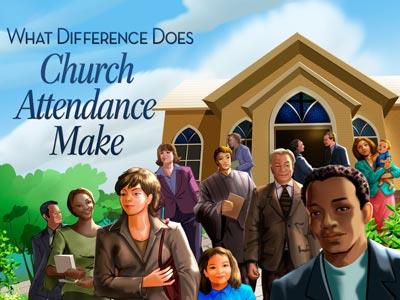-
The Church Of The New Testament - Part 2 Series
Contributed by Sam Mccormick on Feb 7, 2018 (message contributor)
Summary: Part 2 - The origin of the church of the first century.
This 13-part series of classes has been many years in the making. About 25 years ago I began in earnest to examine the features, character and characteristics of the church as it existed in its earliest years. As I sometimes do, I kept my notes all along the way, and this series of classes is to a large extent the product of those years of on-and-off studying the subject. Several things in my experience contributed to my interest in making this 25-year study which I will mention along the way, and those go much further back.
There may be some difficulty in using the individual parts of this series separately, although viewer are free to do so if it serves their purposes. But to those whose interest is in knowing what the church was like in its earliest years, I recommend starting with Part 1 - Introduction to the Church of the New Testament and proceeding through the parts consecutively.
I have prepared some slides that I used in presenting the series in a classroom setting before adapting it to use as sermons. I have left my cues to advance slides or activate animations in the notes as posted on Sermon Central. If anyone is interested in having the PowerPoint files with the slides, I will be happy to send them. Send me an Email at sam@srmccormick.net and specify what part(s) you are requesting. Be sure that the word “slide” appears in the subject line. It may take me several days to respond, but I will respond to all requests.
THE CHURCH OF THE NEW TESTAMENT
OUTLINE OF THE STUDY
I. Introduction
II. The Origin of the Church
III. What is the church?
IV. The First Christians
V. Authority in the First Century Church
VI. Problems in the New Testament Church
VII. How the Church Functioned
A. Introduction to Functions
B. Apostles, Prophets, and Teachers
C. False Apostles, Prophets, and Teachers & Various Gifts and Functions
D. More Gifts and Functions
E. Evangelists, Preachers, and Ministers, Servants and Deacons
F. Pastors, Elders, Bishops, etc.
VIII. How the Church Worshiped
===================================
II. The Origin of the Church
Last Sunday we looked at the historical pattern church has experienced over the 2,000 years of its existence.
(1) Early drifting away from the practices and teachings during the apostles’ lives, and later
(2) an accelerated deterioration of the church’s resemblance to the church we see in the New Testament, to the point that it had no similarity at all to anything Jesus or the apostles set up.
(3) This was followed during the last 800 years by a succession of reforms, all of which were intended, each in its own way, to do one thing—bring the church back to its New Testament roots. The idea has been there for hundreds of years that the church, to be what it ought to be, should be like “the church of the New Testament.” The idea of identifying with the earliest Christians by following their lead is not new.
We found, however, that there are great difficulties in accomplishing this. For one thing, the reformers were persecuted viciously by those who preferred that the church remain what it had become. For another, there were serious differences among the reformers about what factors mattered and which didn’t in reforming the church more nearly to its original state.
These reforms have gotten us back to where the church has some closer resemblance to the church of the first century, but at the price of a splintered presentation of the Christian faith to the unbelieving world, for the reformers did not attack the same defects in the church of their day, and some who followed the reformers had different ideas of what the reform was--or should be--about. Some did not follow the reformers at all, leaving “isms” and “doxies” all over the religious landscape.
That is where the church is today.
Today we rewind the tape to the beginning, and talk about the church’s origin.
Everyone here knows how that the events on the day of Pentecost fulfilled Joel’s prophecy and that the church was established on that day. But I would like to examine some aspects of that event that may not be as well known, but I believe are worth considering in understanding the church of the New Testament.
We start at Caesarea Philippi, where Jesus said to Peter:
…Who do you say that I am?" Simon Peter replied, "You are the Christ, the Son of the living God." And Jesus answered him, "Blessed are you, Simon Bar-Jonah! For flesh and blood has not revealed this to you, but my Father who is in heaven. And I tell you, you are Peter, and on this rock I will build my church, and the gates of hell shall not prevail against it. I will give you the keys of the kingdom of heaven, and whatever you bind on earth shall be bound in heaven, and whatever you loose on earth shall be loosed in heaven." (Mat 16:15-19)

 Sermon Central
Sermon Central



